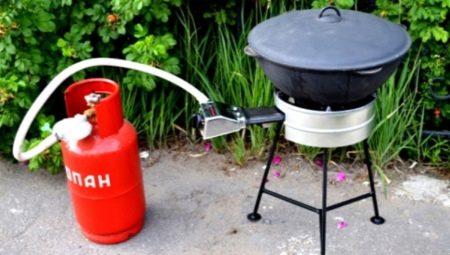Many residents of Russia and other countries know that some dishes find their true taste only when cooked in a cauldron. For example, pilaf, which is so popular among many nations. The cauldron is a culinary container of eastern origin. It has been used for cooking for many centuries. In all its glory, its properties are manifested only in an open flame.
But the kindling of fire by the traditional method, using firewood, takes time and effort. In addition, such a flame is very difficult to control, which makes it easy to spoil the cooked dish.
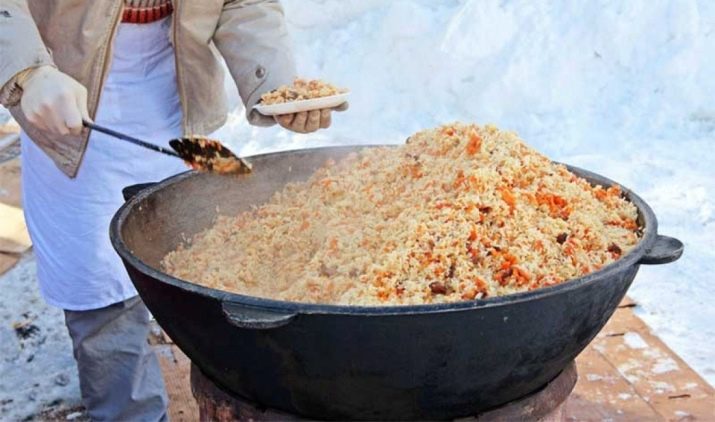
Therefore, we want to offer you a universal modern solution - a gas burner. This simple device will provide the necessary heating and allow you to cook food in a cauldron no worse than on wood. A gas burner can be used both at your summer cottage and on the road, for example, during a hike. In this article we will tell you about the main features of a gas burner for a cauldron, its advantages and disadvantages, and also give some recommendations on how to use it correctly.
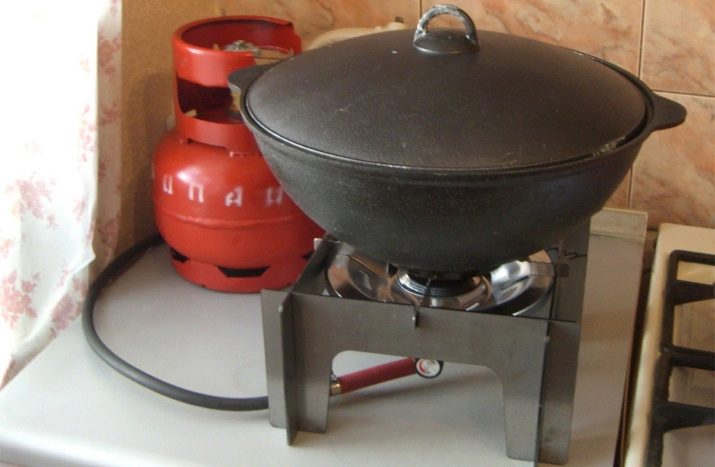
Features
A gas burner for a cauldron is a device of small size and weight, which makes it easy to transport. Also, with its help, you can quickly and conveniently cook food.
One of the main features of such a burner is its simple design.
Thanks to this, it can be assembled at home from improvised means. On various Internet resources you will find many detailed instructions on how and from which it can be done.
The maximum power of the burner can reach seven kW. At the same time, it is quite easy to care for, but it is recommended to regularly check its performance. And if the burner is equipped with piezo ignition, you do not have to use matches for these purposes.
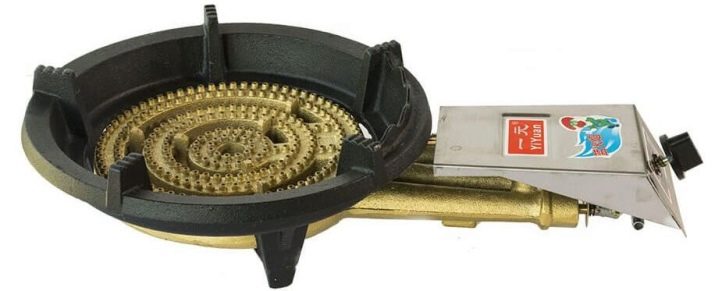
Advantages and disadvantages
A gas burner is a very popular tool in tourist equipment. Cooking delicious food on the go can be very difficult. And coupled with a cauldron, the burner significantly simplifies this process. This is not surprising, since the device has many significant advantages:
- ease of operation - the use of a burner does not require special skills;
- compactness - small size and weight allow you to always have a burner with you in your backpack;
- operation time - one burner can last a very long time if used correctly;
- low price - this device is available to everyone, and if you wish, you can assemble it yourself;
- fast cooking - when you turn on the flame immediately burns with the desired temperature, you do not need to waste time, as when lighting firewood;
- sustainability - the burner is able to work even at low temperatures or in the wind;
- no smoke and soot - this not only makes the cooking process more convenient, but also saves the dishes used.
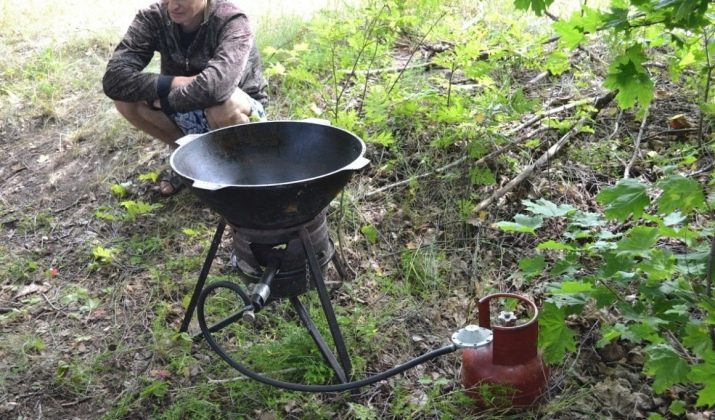
However, no drawbacks can not do. But there are far fewer of them than advantages. By cons include:
- decrease in efficiency due to weather conditions - in spite of the fact that the burner can work at low temperatures, the burning intensity decreases due to the cold;
- fuel consumption - the burner consumes a lot of gas during operation;
- probable threats - gas was and remains a dangerous substance, therefore, if equipment breaks down, there is a danger of explosion or poisoning.
But the above disadvantages do not make gas burners less popular. In any case, more advanced alternatives today simply do not exist. So these devices will remain indispensable and popular among lovers of long hikes for many more years.
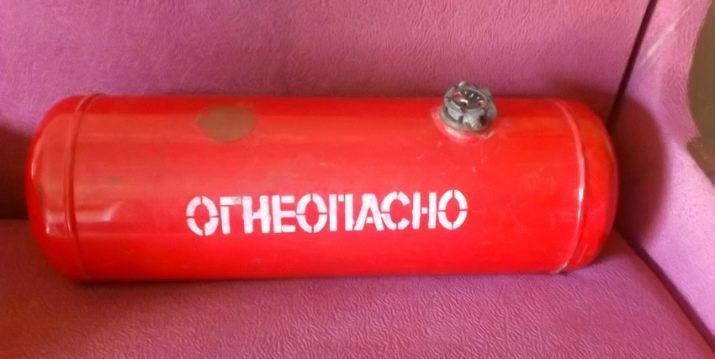
Kinds
Do not forget that one burner is different. They differ from each other in many different ways, including power, design, fastening, type of fuel, etc. First of all, let's look at the four main types of gas burners.
- With hose - as the name implies, the main mechanism of the burner is connected to the cylinder using a flexible tube. This kind of burner is great for large heavy dishes, such as a large cauldron. This device is equipped with very strong legs with a wide setting that can withstand a solid weight.
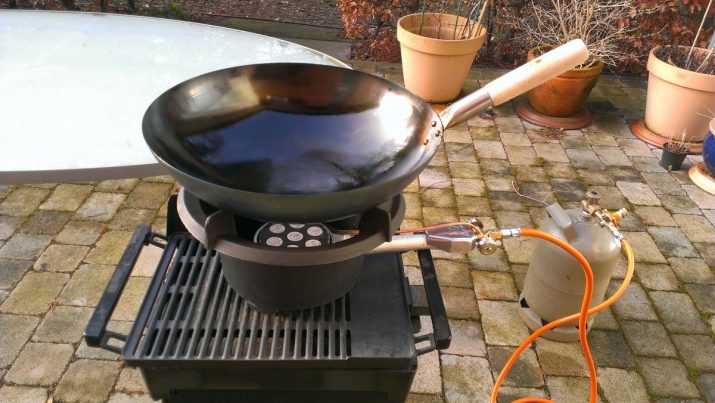
- Propane Tank Designs the most popular among tourists, as they have the most compact sizes and light weight. From the side it looks like a “pocket” gas stove.
However, the main minus of this variety follows from this, because it is suitable only for small dishes, whose volume does not exceed three liters.
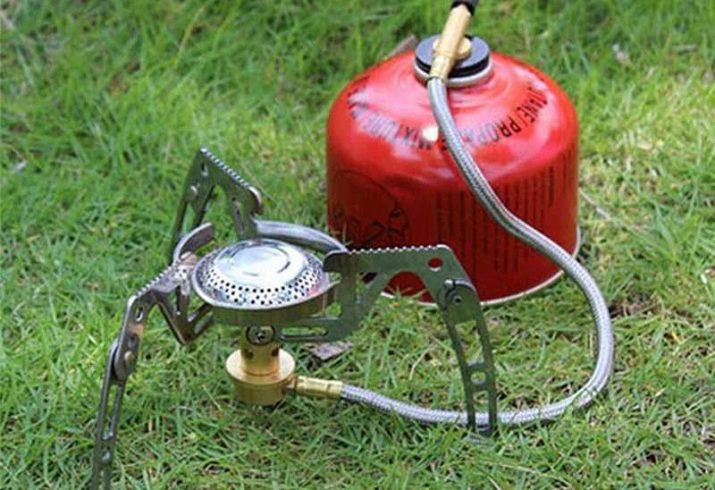
- With horizontal balloon - the cheapest of all varieties. To carry out its work, collet cylinders of the simplest type are used.
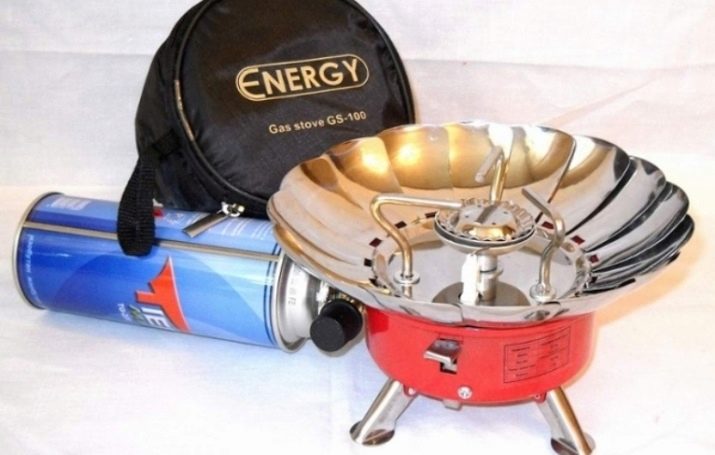
- Integrated designs - a rare variety of systems. They differ from their counterparts in that the burner is connected to a cooking container. It is impossible to replace the dishes, but such a burner consumes much less fuel than the other three varieties.
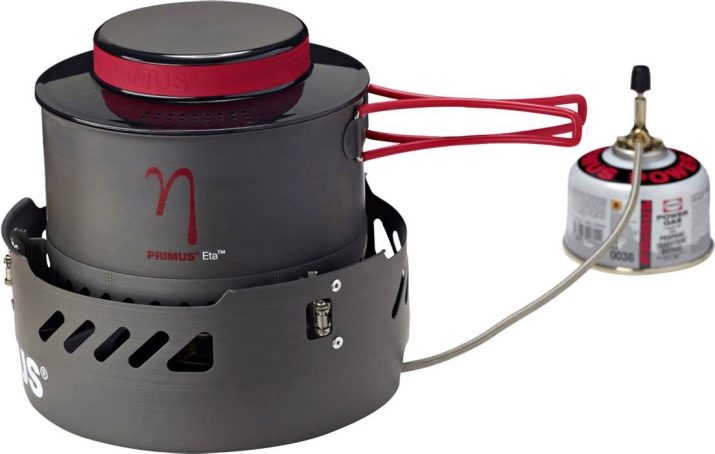
The existence of several types of devices will allow you to choose the most optimal option, depending on your requirements and financial capabilities. You can find a tool suitable for hiking or use on a personal plot. But for this it is necessary to take into account a few more criteria, which we will discuss later.
The choice
So, we found out that burners primarily differ from each other in the type of their design. Now let's take a closer look at their main characteristics.
The first of these is power.It directly depends on the size of the dishes used and the amount of food prepared. In terms of power, three types of portable burners can be distinguished:
- weak - no more than 2 kW;
- average - from 2 to 3 kW;
- powerful - up to 7 kW.
Many modern burner models are equipped with a convenient power regulator that allows you to control fuel consumption.
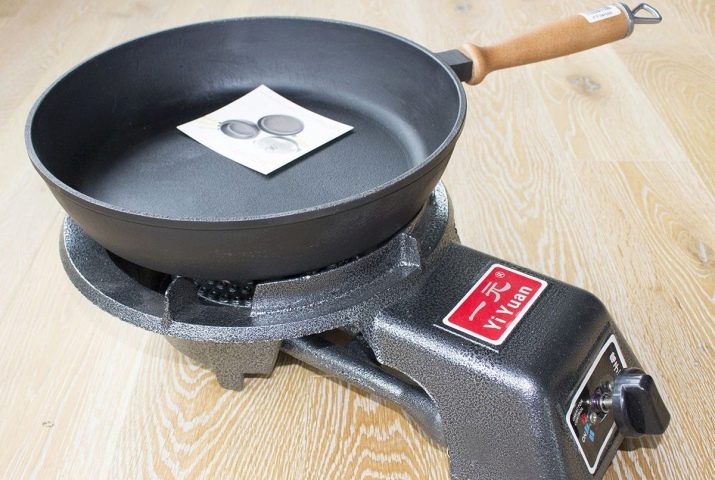
For cauldrons, it is best to use powerful burners to provide the required degree of heating.
The smallest cauldrons, whose volume does not exceed 12 liters, require power from 5 to 8 kW. In summer cottages, as a rule, large cauldrons are located. In this case, they need:
- 20 kW - for a cauldron of 40 liters;
- 25 kW - for a cauldron of 60 liters.
By the way, that’s why For such utensils, an ordinary stove is not suitable. The power of one burner is only 2.5 kW. Because of this, it is impossible to prepare a dish in a cauldron, as intended.
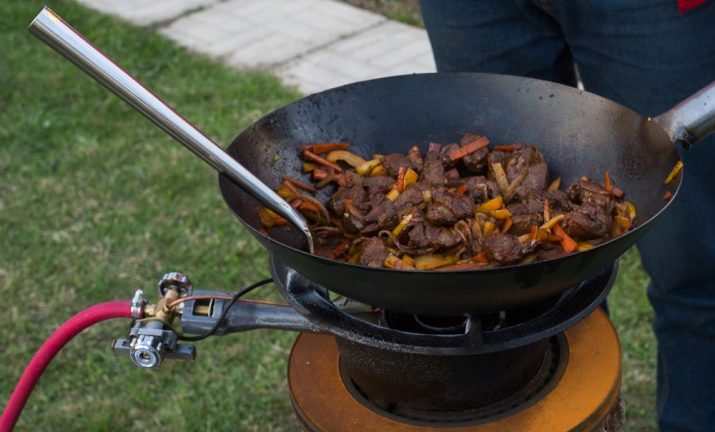
Also the most important characteristic of the burner is the material of manufacture. It determines how strong the fixture will be. According to experts, a cast iron burner is best suited for home use. This durable metal can withstand heavy weight, high temperatures, and does not deform. And those who prefer to cook during hiking trips should prefer an aluminum burner. It is quite strong for small dishes, lightweight, and does not cause problems during long transportations.
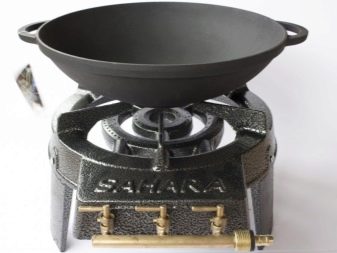

If you choose a device specifically for the cauldron, it is worth considering the design. This tank has a wide bottom, and heating is evenly distributed throughout the cauldron. To do this, choose a larger burner. Her legs must also be strong and widely set to withstand the weight assigned to them. As we mentioned above, the best option for such cases is a torch with a hose.
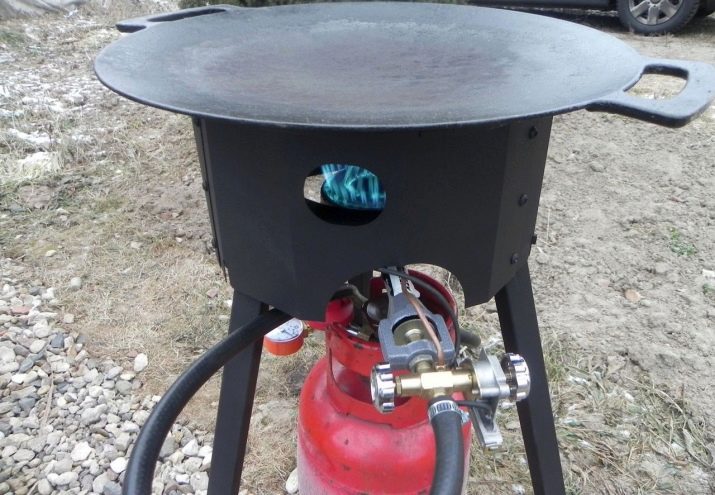
An important criterion that many people forget when choosing is the type of fuel that the gas burner will run on. Depending on it, the following types of burners are distinguished:
- inflatable - provide for the use of gaseous and liquid fuels;
- injection - work due to preliminary mixing of gas with oxygen;
- atmospheric - environments are mixed, but only partially;
- fuel oil - injection of media allows to maintain a viscous state of fuel;
- diffuse - work only on gaseous fuel;
- hearth - due to the location of the system from below, the burner does not require additional blowing.
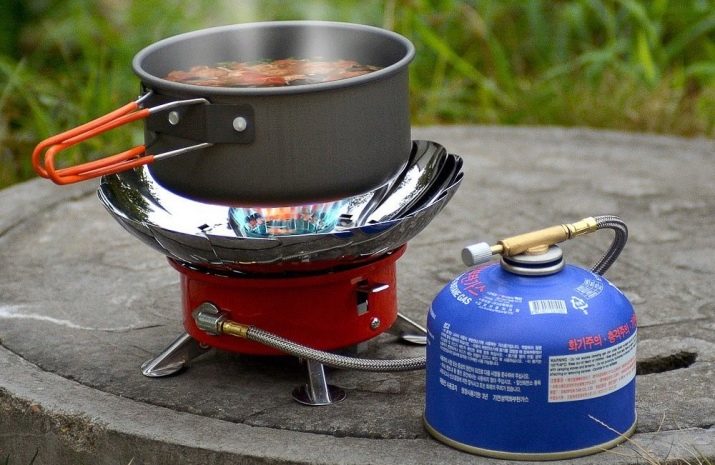
The burners are connected to the fuel cylinders using a threaded fastener.
In addition, pay attention to the presence of piezo ignition on the burner, because not all models support it. This function will greatly simplify the operation of the device.
It consists in converting the mechanical effect into an electrical potential, due to which the flame is ignited.

Recommendations for use
A gas burner is a fairly simple device to use. But it works on gas, which means that for safety reasons you must follow certain operating rules. Especially for you, we have prepared some important tips:
- Before turning on the burner, check its condition and the condition of the cylinder for damage and breakdowns;
- if the cylinder is new, bleed the valve so that the burner works evenly;
- to install structures, use only flat surfaces, and during cooking, avoid tilting the burner;
- Never turn on the burner inside the tents;
- monitor the quality of the fuel used;
- if the nozzle openings become clogged due to frequent use, clean them with a needle;
- any broken parts must be replaced, otherwise the use of such a device becomes extremely dangerous;
- keep the fuel tank away from fire;
- during cooking do not leave the system unattended;
- if you use the burner at low air temperature, put a substrate under the bottle, and even better keep it warm, in warming bags;
- after cooking is complete, shut off the gas supply;
- Before disconnecting the burner from the cylinder, allow it to cool.

As you can see, the rules are pretty simple. Every lover of long trips is obliged to know them. A gas burner is a useful device not only for tourists, but also in everyday life. Especially if you like to pamper your family with delicious dishes from this cauldron, prepared according to recipes of eastern peoples. This device will not only provide you with such an opportunity, but also greatly simplify the cooking process. And firewood and coal will remain only a relic of the past or decoration at your summer cottage.
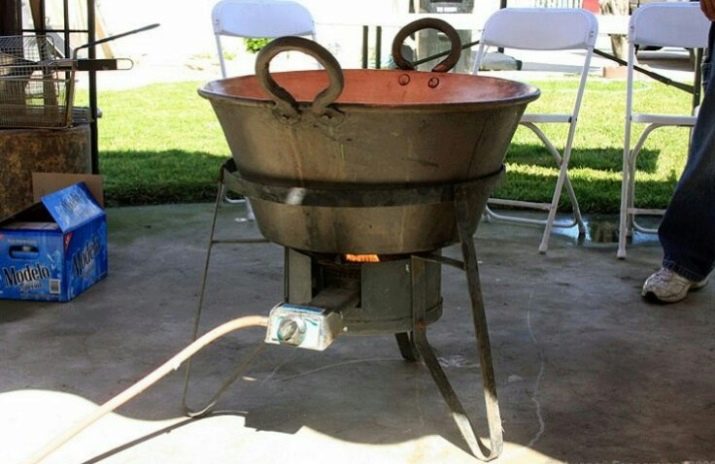
The principles of the operation of gas burners and their characteristics can be found in the next video.
